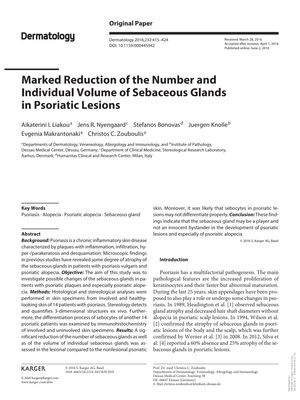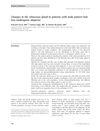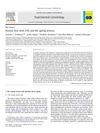Marked Reduction of the Number and Individual Volume of Sebaceous Glands in Psoriatic Lesions
January 2016
in “Dermatology”

TLDR Psoriasis lesions have fewer and smaller oil glands, which might affect the condition's development.
The study, involving 14 patients with psoriasis, demonstrated a significant decrease in both the number and volume of sebaceous glands in psoriatic lesions when compared to non-lesional skin. Histological and stereological methods, along with immunohistochemistry, revealed improper differentiation of sebocytes in psoriatic lesions. The findings suggest that sebaceous glands could contribute to the pathogenesis of psoriasis and psoriatic alopecia, potentially explaining the dryness and scaling of psoriatic plaques. Additionally, the study, which included 11 participants and was approved by the Ethics Committee of the Charité – Universitätsmedizin Berlin, Freie Universität Berlin, identified CK7 and ESM as markers for early and late sebocyte differentiation, respectively, and suggested that abnormal sebocyte differentiation might lead to inflammation. The study posits that the reduction in sebaceous gland volume may be a secondary effect in the disease's development, prompting a reconsideration of the role of sebaceous glands in psoriasis and related alopecia.
View this study on karger.com →
Cited in this study

research Changes in the sebaceous gland in patients with male pattern hair loss (androgenic alopecia)
Sebaceous glands in male pattern hair loss patients have more lobules and might cause early hair growth phase shifts.

research Human skin stem cells and the ageing process
Skin aging is due to impaired stem cell mobilization or fewer responsive stem cells.